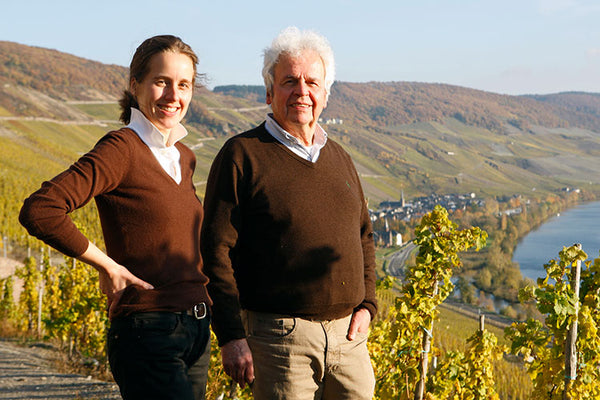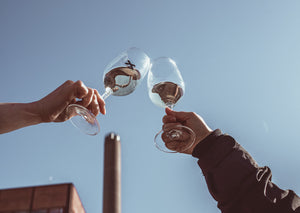
JJ Prüm
Johann Josef Prüm, better known as JJ Prüm, founded his eponymous winery in the village of Wehlen in 1911 after breaking away from the SA Prüm estate. However, the story of the Prüm family in the area goes back as far as 400 years, and the family is known to have cultivated wine since the 14th century. The work done by Johann Josef's son Sebastian Alois in the 1930s and 1940s can be considered the strongest foundation of the farm's current world reputation, as he developed the well-known style of the farm's wines. The sons of Sebastian, who passed away in 1969, Dr. Manfred and the younger Wolfgang Prüm continued to run the farm in their father's footsteps, and since 2003, Wolfgang's daughter Dr. Katharina Prüm has been the head of the farm alongside her father. The reputation of the more than 100-year-old farm is unshakable, as evidenced by Gault Millau's selection of Manfred as the best winemaker in Germany in 1996.
JJ Prüm owns 22 hectares of vineyards in the farm's home village of Sonnenuhr in Wehlen, Himmelreich in Graach, Lay and Badstube in Bernkastel, and Sonnenuhr in Zelting. In the famous Wehlener Sonnenuhr, the farm owns 5 hectares of vineyards. This deep vineyard filled with gray shale has a slope of up to 70°. The soil manages to secure the vines' water supply all year round, and when facing south and southwest, the grapes ripen optimally. It's no wonder that Prüm is known specifically for this shelter, because it got its name from the sundial erected in 1842 by Jodocus Prüm, the forefather of the farm, in the shelter for the workers.
Another almost equally famous site is the Graacher Himmelreich, just south of the Wehlener Sonnenuhr. Especially in hot and dry years, the wines of this more southerly vineyard compete for first place with the wines of Sonnenuhr. The aromas of Graacher Himmelreich's wines show more citrus than the stone fruitiness of Wehlener Sonnenuhr, and the acidity is often a bit sharper. However, the wines are more approachable when they are younger than the products of their neighboring plots, whose layered diversity only opens up after a few years of maturation. Himmelreich's vineyard to the southwest is not quite as steep as Sonnenuhr, and the soil is a little deeper, which also provides more water for the vines.
Up to 70% of the vines in the nurseries are ungrafted and the farm focuses solely on growing Riesling. And what kind of wines are made from these grapes! The producer's Spätlese and Auslese style wines are incredibly long-lived and, thanks to their top quality, are considered the best representatives of the Mosel's individual style, with lively acidity, delicate fruitiness and incredible balance. After harvesting, the grapes are lightly crushed and they spend 6-8 hours in the press. After settling overnight, the wines ferment spontaneously without added yeast strains and enzymes, and the fermentation is stopped by cooling the wines and adding sulfur dioxide to them. After fermentation, the wines are allowed to mature in steel containers on the lees until March-April, when they are racked. Even before bottling, the wines are allowed to rest for 4 months. When bottling, there is often still a little carbon dioxide left in the wines, which makes them taste particularly lively. Due to residual sugar and to ensure longevity, the wines are also filtered. Oak barrels were given up on the farm already in the 1970s, so all wines are made in steel tanks to preserve the purity of the grapes and wines.





